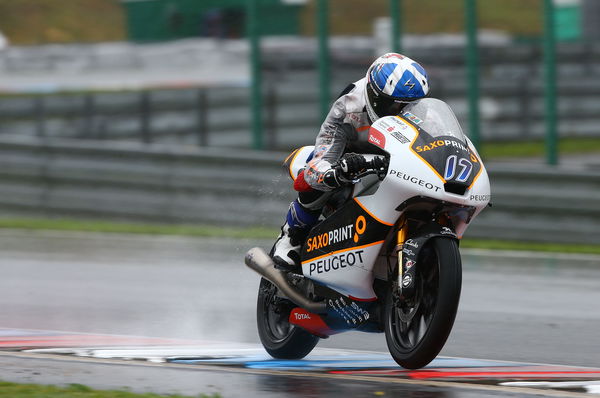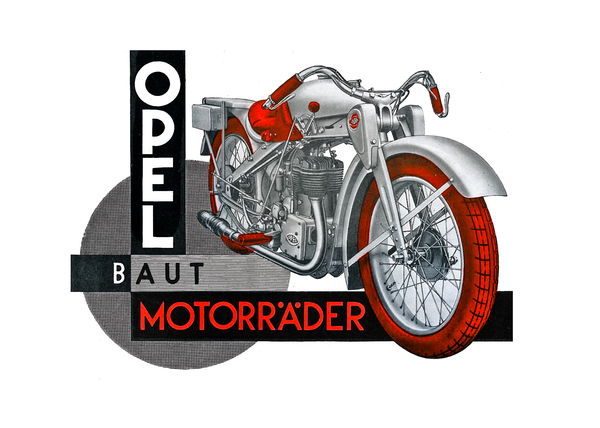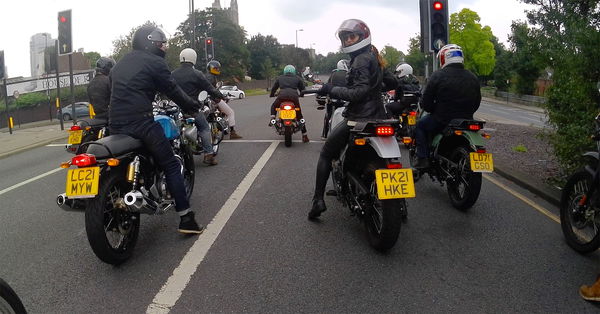Here's one automotive brand that you (probably) never knew made motorcycles
Numerous manufacturers have crossed from cars to motorcycles, and vice versa, but some have without a doubt left more of a mark than others.

There have been innumerable manufacturers of cars, motorcycles, and both over the years, but it is not always obvious which ones have made the crossover.
Honda is an obvious example of a manufacturer that has successful efforts with both two and four wheels, and is almost equally known for both.
That is not the case for all manufacturers that make both cars and motorcycles, though. Peugeot, for example, is far better known for its four-wheeled exploits than its two-wheeled creations.

Although Peugeot has won a Grand Prix, with John McPhee in 2017, the bike was essentially a re-badged Mahindra. The French manufacturer’s 205 T16, however, was affirmatively a Peugeot, and that was the best car of rallying’s most famous - or infamous - era: Group B.
Peugeot created their 205 T16 to the latest standards of the mid-1980s, which meant a four-wheel-drive system to match that of the Audi Quattro S1.
Audi had made four-wheel-drive the norm with the Quattro when it arrived in rallying in 1980, and continued their dominance into the first years of Group B. But, even when Group B arrived in 1983, some manufacturers were still not sold on four-wheel-drive.

One of those was Lancia, who made their 037 definitively rear-wheel-drive, and another was Opel, whose Manta 400 and Ascona 400 both followed the same drivetrain philosophy as the 037.
The Ascona won the world title in 1982 with Walter Rohrl, who then went on to drive for both Lancia and Audi, while the Manta became the marque’s Group B car from mid-1983.
Before the Ascona and Manta, Opel made the Commodore and the Kadett, which were both also used as rally cars in the 1970s, even though the original Kadett model had been produced in the late-1930s as a limousine-style car.
And before all of that - long before all of that - Opel made motorcycles.
The first Opel motorcycle was made in 1901, and was called the Motorzweirad, which translates to English as “motorised two-wheeler”. The Motorzweirad was long, thin, and tall, and was overtly derived from a bicycle.

But despite its relative visual disconnection from the machines we call motorcycles today, the Motorzweirad brought Opel into motorcycling, and set their two-wheeled course that lasted almost 30 years.
In the years after the original Motorzweirad, Opel moved the engine to sit within the frame, and began driving the rear wheel by belt. The engine could produce 1.75 horsepower, which propelled the bike to speeds as fast as 40kph, or 24.8mph. On unsophisticated suspension and presumably road surfaces that were not exactly akin to California’s Highway 1, 40kph is sort of cracking on a bit.
Opel’s two-wheeled journey ended in 1930, when it stopped production of the Motoclub 500 which it began building in 1928. The Motoclub was one of the first bikes to make use of a pressed steel frame. The new construction method allowed production times to be cut from 15-25 hours per motorcycle to only four hours.

Opel built the Motoclub’s frame with this method under licence from Ernst Neumann-Neander, who had come up with the industrial idea earlier in the 1920s before making the agreement with Opel.
Neumann-Neander’s path to Opel earlier in his life when he became fascinated with motorisation in the late 1800s. He was generally speaking an artist, and had applied his illustrative capabilities firstly to advertising materials, but then to coachbuilding, and then to motorcycle design.
In that way, the Motoclub is definitively Neumann-Neander. It’s cadmium-coated frame with red trim, seat and tyres make it one of the most aesthetically unique motorcycles - or even vehicles - in history.
But the Motoclub’s innovation stretched beyond its visual uniquity. It made use of an air cushion and leaf springs beneath the seat to enhance comfort, while other steps were made with the suspension, also to try to make the bike more comfortable.
Motoclub was also used by Opel for a land speed record attempt. The powertrain had little in common with the standard Motoclub, since it used 12 rockets.
The bike’s engine was used to achieve the fastest possible speed it could, which was reportedly around 130kph, before the rockets were fired up and propelled the Motoclub to a reported speed of around 220kph.
Opel were trying to beat a record of 200kph set by Zenith, but although they apparently beat the record, because they had set it in what they considered a practice run they decided not to post it officially. Then, rocket-powered bikes were banned, so Opel’s attempts stopped.
The idea to try for the land speed record with a rocket-powered bike was that of Fritz von Opel. It was also von Opel who negotiated the pressed steel frame licence with Neumann-Neander.
Von Opel was the grandson of Adam Opel, who founded the company. 2022 marks 160 years since Opel was founded, and its founder’s name could, until quite recently, be found on the back of the brand’s R2-class rally car, the Opel Adam. The Adam has been replaced by the Corsa but, considering the trail blazed by Opel's motorcycles in the early 20th century, that they replaced the Motoclub with nothing seems a shame.











